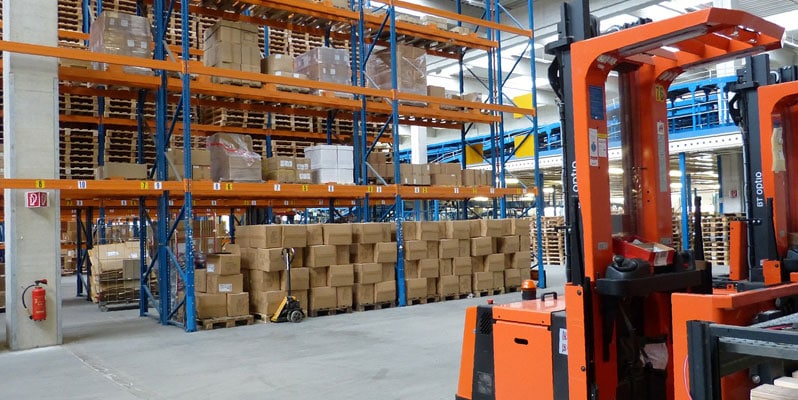
These trends show how technology has advanced over the past decade and will continue to drive change in logistics and supply chain management. Although technology and innovation are a focus, we must also understand the fundamentals in order to make it all work simultaneously.
If you’re planning to pursue a career in logistics and supply chain management, read on to find out what 2016 has on offer for the industry.
Qualifications
Upon earning a logistics and supply chain management qualification, like the Diploma of Logistics will demonstrate a candidate’s high level of commitment to the career, as well as expertise in the field. Qualifications may also give a competitive edge when seeking logistics and supply chain management positions. Highly skilled managers are currently in demand because of their ability to notice complications and create effective solutions.
Supply Chain: Circular vs. Linear
The concept of a circular supply chain is driven by our circular economy. Last year saw a shift from the linear supply chain to the circular supply chains. Many are in support of the circular supply chain as it is dependant on the recycling of used products back to raw materials. However, the circular supply chain poses unique challenges and opportunities for supply chain professionals. When a business purchases equipment or remanufactured equipment it is an investment. Over time, this equipment improves profitability and will have a positive return on investment.
Manufacturers should be constantly reviewing how they can improve on maintaining, upgrading, re-using and recycling, electrical goods more cost-effectively. This circular economy is a practical solution to conserving resources, where products such as a smartphone or TV will be seen in a different way by concentrating on them for their parts and seeing them as a continuous value creation. 2016 will see an emphasis upon the refurbishment of parts and products as we move towards the circular supply chain.
Cloud Computing
In 2016, the cloud will allow for easy to deploy technology and systems. Costs will prove to be a huge driver to the cloud for those organisations that are still running legacy applications. The challenge of infrastructure, maintenance and labour costs will necessitate their transition to the cloud. A big trend we are noticing is many organisations are transitioning to the cloud due to an increasingly ageing workforce. Many exceptionally talented technology professionals are leaving and in most cases these people are irreplaceable. The way many are compensating for the loss of these people are to implement a system that doesn’t ever need to be replaced.
Supply chain management has dramatically changed over the last few years. Many companies that have overseas manufacturing vendors are working to improve quality, reduce costs and simplify processes. The concept of being able to report once and manage anywhere has quickly become the standard for great supply chain management driven organisations. There are a number of benefits surrounding the transition to cloud-based supply chain management and most of them are centred around reducing costs, efficiency and scalability.

Wearable Technology
Wearable technology, combined with the use of cloud software will become much more widespread across the logistics and supply chain industry in 2016. The ability for workers to be able to access and input data in real time is the crucial way in which suppliers will be able to meet stringent demands of consumers. The current wearable technologies include Apple Watch, FitBit and Google Glass and they are all revolutionising and enhancing our daily experiences and consumers are now anticipating the more common use of drones, self-driving cars and self-piloting planes to become standard.
The wearable technology market is set to grow. The supply chain must be prepared for the influx of new devices, allocating resources and sourcing new parts, as well as ensuring all technicians and other relevant people are adequately trained. The industry needs to be prepared as we are yet to see how this new product category will impact reverse logistics. Companies should take advantage of these game-changing technological developments when it comes to their own supply chain. Smart watches could assist site managers to observe real-time performance of the business process, productivity, inventory levels and deliveries. Introducing wearable technologies within your company will improve productivity by utilising the technologies to make more informed decisions.
Advancements of Artificial Intelligence
Artificial intelligence is no longer a vision, rather a trend into which huge investments are being made. In 2015, the question was still very much whether we might see self-driving vehicles on the road. However now we ask the questions of the future where, when and how? Robotics are already in use around us, most notably in industrial applications including warehouses such as facial recognition systems. The possibilities of the two type of technologies fusing together is exciting and can apply to a range of different industries.
We may still have a long way to go but there are predictions of self-driving cars by 2020 and approximately 10 million self-driving cars will already be travelling on our roads. However, the use of robotics alone does not result in progress, if there are no intelligent systems at a higher level which can make optimal decisions for the overall use of machines.
Focus on Data Analysis
There is an abundance of benefits from leveraging data analytics for the logistics and supply chain industry. This includes reducing forecasting errors and enabling informed forward planning decisions and better predictions for product and parts demand. The use of integrated technology for efficient data interchange to decrease errors and reduce overall resources needed to execute supply chain functions such as transportation, warehousing and inventory management.
The strive for continual improvement and better supply chain visibility has forever been a goal supported by many supply chain professionals. With the recent advancements in technology this goal has now become available. There is hardly an activity that does not produce some kind of data that can help companies understand what is going on in their supply chain. This ability to see more clearly and deeper into supply chain processes will ultimately help supply chains become much safer and secure.
Bigger Focus on Risk Management
For many years, companies have focused on supply chain risk management and how we can address the potential risks that happen or go wrong in our operation processes. Although this is a great start, no matter how thorough you plan, things that you do not anticipate will still go wrong. The real measure of a company is its resilience, or its ability to bounce back from the unexpected.





